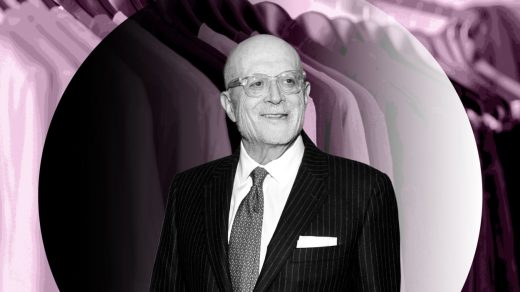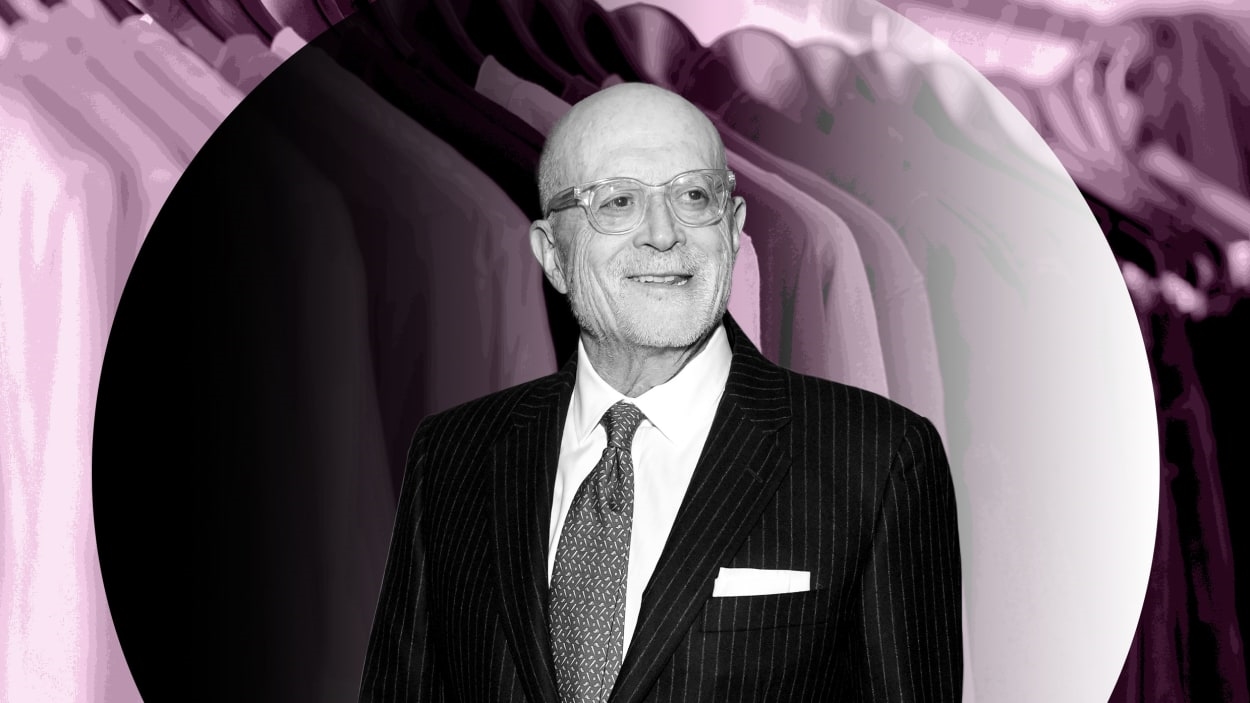Returning to his Bronx roots, retail legend Mickey Drexler praises the ‘underdogs’ who work harder
On Friday, Mickey Drexler, a living legend in such American-spun clothing brands as Gap and J.Crew, spoke at the commencement ceremony for his alma mater, the Bronx High School of Science in New York, where a new class of pupils was being freshly loosed upon the world.
“The reason I like Bronx Science is, it’s the only school where you have to take a test to show how smart you are,” he quipped, referring to the school’s admissions exam. “At a lot of schools, it’s who you know, who you schmooze with, that’s how you get in.”
For Drexler, getting in may have been the path to college—as the first in his family to go—but it also shoved him into a new environment, one where he quickly found himself the underdog.
“When I passed the test, I’ll never forget, a so-called friend said, ‘Hey, you’re not that smart!’” Drexler said. “Okay. He wasn’t my friend for long.” But still, the comment echoed his own inner monologue. “Everyone underestimated me, including myself,” he said. “When I started my freshman year, I thought everyone was a lot smarter than me. . . . I was intimidated, I was looking at Phillip’s grades next to me—A, A, A, A . . . I had four straight years of the Sunday scaries.”
But according to Drexler, who is 78, those tough grade-school years forged an iron will in him, one that pushed him to become the hard-charging retail titan that the world would later recognize.
Drexler’s résumé now reads like a revolving closet of shopping-mall fixtures—ones that were once treading water at risk of going under. But with Drexler’s magic touch, they were elevated to pop-culture-icon status in the ’80s and ’90s, churning out wardrobe staples you know and love: faded jeans from Old Navy, sharp blazers from Ann Taylor, whimsically patterned cocktail dresses from J.Crew.
“I don’t think my childhood was a very happy time in my life,” he admitted. “But in retrospect, I’m appreciative because it led me to daydream, to live in my imagination, and to fantasize about big goals. And that was the greatest gift that was ever bestowed upon me: imagining a different kind of future for myself.”
After leaving the Bronx for SUNY Buffalo, then getting an MBA from Boston University, Drexler moved back to New York—this time, Brooklyn—then landed a few brief stints in merchandising at department store giants Macy’s and Bloomingdale’s. In 1980, he was hired to lead Ann Taylor. Within three years, he transformed it from a money-losing mid-market retailer with only a vague sense of brand into a thriving mecca for working women, where they snatched up smartly tailored pencil skirts and pantsuits.
“Always act like the underdog who’s got something to prove,” Drexler told the audience at the United Palace Theater in Washington Heights, where the commencement was held. “When you just start at a company, they think you’re just whatever. They don’t bow down to you. That’s most of the world. . . . I was never the smartest kid in the classroom, but I was always ambitious, and I imagined someday I might be successful.”
He’s perhaps most credited for his next gig, at Gap, which under Drexler’s rule, slingshotted during the ’90s to define American kick-it culture, with a line of laid-back khakis and denim, basics, and a campaign around dress-down Fridays. In less than a decade, its sales grew from $400 million to $14 billion. With the brand buzzing, Drexler launched Old Navy, expanding the company’s empire of casual-cool. But it wasn’t enough to please Gap founder Donald Fisher, who—after clashing with Drexler—fired him in 2002 due to a sales slump and ballooning debt.
From there, Drexler jumped to J.Crew, where as chief executive he again reinvented a struggling brand, making over its image from a low-priced retailer to an upscale, vintage-inspired label with “frills included” (and again, launched an expansion label, Madewell). By the time of his departure in 2017—which coincided, again, with a prolonged downturn at the company and tension with its backers—J.Crew was known for dressing the likes of First Lady Michelle Obama, then-Duchess of Cambridge Kate Middleton, and a host of celebrities including Hollywood actress Reese Witherspoon and singer Taylor Swift.
As the world kept spinning—and consumer tastes evolving—Drexler has perhaps once again found himself the underdog, having led two brands to their apex, but unable to bring them through yet another hype cycle of the fashion industry. Amid the pandemic in 2020, J.Crew filed for bankruptcy.
But Drexler’s influence has continued, courtesy of his eponymous venture firm, Drexler Ventures, which has invested in next-generation retailers like direct-to-consumer eyewear brand Warby Parker and trendy athleisure label Outdoor Voices. In 1999, Steve Jobs, presumably spotting Drexler’s eye for design, invited him to join Apple’s board of directors, which Drexler served on for 16 years, helping, early on, to architect the first-ever physical Apple store. So high had his star risen that, in the early 2010s, he even made a cameo appearance on AMC’s hit television series Breaking Bad, where he played a car wash customer.
Nowadays, he leads Alex Mill, the clothing company started by his son, Alex Drexler, and apparently gives speeches to Bronx Science graduates. “Today, you’re my customers,” he said.
What’s next? He might not know yet, but he’ll do what he always did as the underdog, to bridge the gap between himself and the others he saw as smarter or more well-off—work harder. It’s a quality he looks for in employees, too.
Take Roxanne, he said, whom he’d hired at J.Crew and still works with today. “She’d gone to a very fancy college,” said Drexler. “But when the [interview] conversation moved to summer jobs, she told me that between junior and senior years of college, she pumped gas on the dock of a marina. There, she got an A+. She knew how to work.”
(15)



